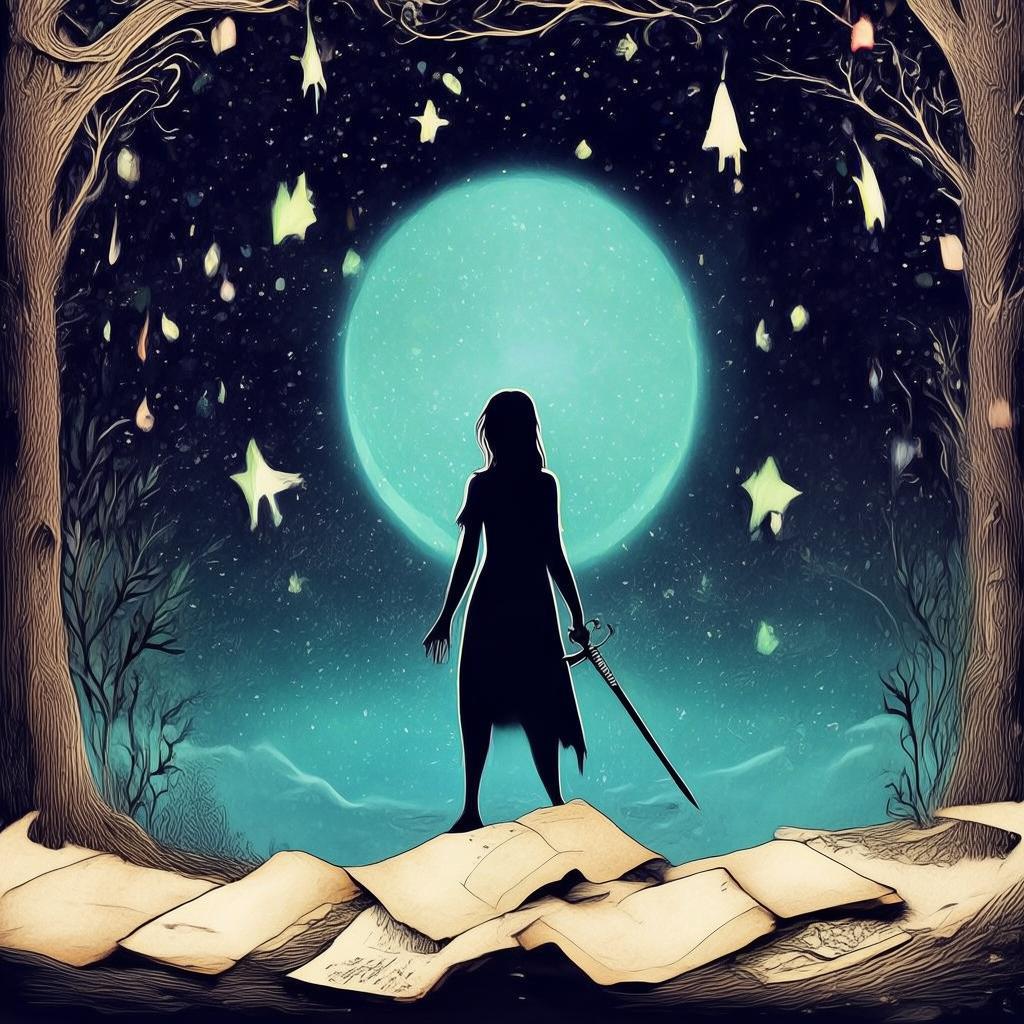The Symphony of Shadows: A FilmNamtan Musical Tale
The night was as dark as the canvas of the silent film that played on the screen. The room was hushed, save for the occasional rustle of the curtains in the drafty window. The symphony of shadows played in the corners, whispering secrets to those who dared to listen.
In the heart of this room, young composer Aria sat at her piano, her fingers dancing across the keys with a passion that matched the intensity of the storm outside. Her latest composition, "The Symphony of Shadows," was a blend of her love for film and her longing for a connection that seemed as elusive as the symphony itself.
Aria's story began in a small town where dreams were as common as the rain. She had grown up in the shadow of her famous father, a director whose films had captivated audiences around the world. Yet, despite his acclaim, Aria felt overshadowed, her own dreams smothered by the weight of his legacy.
One evening, while watching an old film with her father, she noticed a strange pattern in the shadows on the wall. It was as if the film itself was trying to tell her something. Intrigued, she began to study the art of silent film, finding solace in the world of shadows and light that unfolded on the screen.
It was during this time that she met Lior, a mysterious man who claimed to be a composer in his own right. They shared a love for music and film, and soon their conversations turned to the possibility of collaborating on a project. Lior proposed a musical piece that would accompany a silent film, a symphony that would tell a story of love, loss, and redemption.

As Aria and Lior worked together, their relationship blossomed into something more than mere collaboration. They were drawn to each other by a shared sense of longing, a desire to break free from the shadows that had haunted them for so long. But as their love grew, so did the shadows that threatened to consume them.
The symphony was nearing completion, and the film it was meant to accompany was a masterpiece in its own right. It was a story of a woman who falls in love with a man she has never seen, a man who is both her savior and her downfall. The film's title was "The Symphony of Shadows," and it mirrored the lives of Aria and Lior in more ways than they could have imagined.
As the film's release date approached, Aria and Lior found themselves at odds. The pressure to succeed was immense, and the shadows that had once been a source of inspiration now threatened to engulf them. Aria questioned her love for Lior, wondering if it was the same love depicted in the film, or if it was something more sinister.
One night, as Aria sat alone in her room, the symphony seemed to play itself, its notes echoing the turmoil in her heart. She realized that the symphony was not just a musical piece; it was a reflection of her own life. The shadows were not just in the film; they were in her soul.
Determined to face the truth, Aria confronted Lior. They discovered that the shadows they had been fighting were not just in their lives, but in the film itself. The director of the film, Aria's father, had hidden a secret that would change everything. The man in the film was not just a character; he was a part of Aria's past, a man she had loved and lost long ago.
With the truth uncovered, Aria and Lior faced the most difficult decision of their lives. Would they let the shadows consume them, or would they embrace the light that had always been there? The symphony played on, its notes a testament to their love and the resilience of the human spirit.
In the end, Aria and Lior chose to face the shadows together. They realized that the symphony was not just a musical piece; it was a love story, a tale of redemption and hope. The film was released, and it was a critical and commercial success, but more importantly, it was a story that resonated with audiences around the world.
Aria and Lior's love was tested, but it survived. They learned that the shadows could not define them, that the light of love was always there, waiting to be discovered. And so, they continued to compose, to create, to live in the light of their shared love, knowing that the symphony of shadows would always be a part of their story, but never again would it hold them captive.
✨ Original Statement ✨
All articles published on this website (including but not limited to text, images, videos, and other content) are original or authorized for reposting and are protected by relevant laws. Without the explicit written permission of this website, no individual or organization may copy, modify, repost, or use the content for commercial purposes.
If you need to quote or cooperate, please contact this site for authorization. We reserve the right to pursue legal responsibility for any unauthorized use.
Hereby declared.









